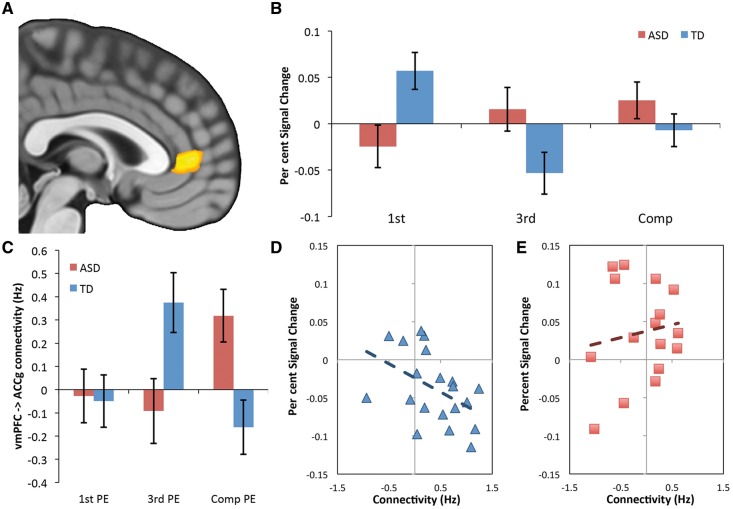Figure 3.
Group differences encoding Agency and connectivity with the ACCg. (A) Group × Agent interaction in vmPFC [Area 32PL (Neubert et al., 2015); MNI: 3 44 5, thresholded at P < 0.001 uncorrected] time-locked to privileged information (Fig. 1B). (B) Bar plots illustrating percent signal change [prediction error (PE) + predictable outcome] in vmPFC for TD and ASD. The activation in vmPFC was driven by an Agent effect in TD (first person > third person and Computer) that is not present in ASD. Error bars indicate standard error. (C) Bar plots illustrating that a boost in connectivity from the vmPFC to the ACCg specifically for third person (social) prediction errors in the TD group. (D and E) Correlations between effective connectivity strength social prediction errors in TD (D) and ASD (E). This shows a significant correlation between connectivity from the vmPFC to the ACCg and the strength of social prediction errors in TD (r = −0.46), which is absent in ASD (r = 0.15).

